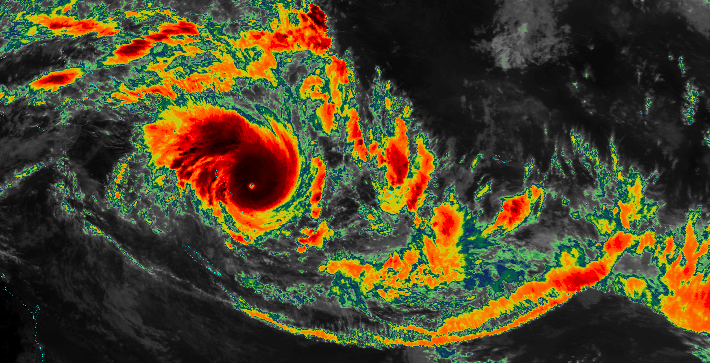 Cyclone Pam. Photo Credit: Harrison Tran
Cyclone Pam. Photo Credit: Harrison Tran
Vanuatu Devastation Blamed on Climate Change
This past weekend, the island nation of Vanuatu was devastated by Cyclone Pam, a massive cyclone with winds that reached up to 185mph, destroying a significant portion of the country’s infrastructure. Bridges and roads were washed away, ships were thrown into trees, crops destroyed, and natural coral reef formations were badly damaged. As of Monday morning, 8 citizens were confirmed dead with the death toll expected to rise significantly following the arrival of humanitarian aid and recovery teams. Vanuatu President Baldwin Lonsdale said of the storm:
“This is a very devastating cyclone … I term it a monster that has hit Vanuatu. It is a setback for the government and for the people of Vanuatu … All the development that has taken place has been wiped out.”
Countries have begun providing aid to the devastated island. Military flights from New Zealand and Australia were bringing in water, sanitation kits, medicines and temporary shelters for the nearly 10,000 people made homeless on the main island. In the capital city of Port Vila alone, roughly 90% of homes were damaged or destroyed.
This storm highlights what as been a recent call from islands in the Asia-Pacific region to address the issue of climate change, specifically sea-level rise. An increase in the number of storms in the region is directly attributed to sea-level rise. President Lonsdale spoke on the increasing number of cyclones during a speech at a United Nations world conference in Japan:
“This year we have more than any year. Yes, climate change is contributing to this.”
ASP Senior Fellow for Energy and Climate Andrew Holland further elaborates on the threats of climate change in the Pacific:
The area around the Pacific is perhaps the most vulnerable to the effects of climate change because of how multiple threats overlap one another, as our Climate Security Report notes. Environmental factors like rising sea levels, declining fresh water availability, declining food productivity, and the threat of more powerful tropical storms are combining with other factors like rapid urbanization in low-lying river-delta cities, deforestation of tropical forests, and international competition over access to energy resources.
The devastation at Vanuatu represents the clear and present danger that climate change imposes. It has the potential to wreak havoc economically via destroying crop yields and infrastructure, and can take human lives. ASP’s stance on climate change is clear: it poses an immediate threat to every nation’s national security, and more most be done to account for this issue. It is storms like these that show why US Pacific Command’s Admiral Locklear said “[Y]ou have the real potential here in the not-too-distant future of nations displaced by rising sea level.” In the Pacific, climate security is an immediate threat.
Further reading on climate change/security:
Military Engagement on Climate Strengthens Ties in Asia
The Implications of Climate Change on the Islands of the Asia Pacific
Global Security and Climate Change: The Threats of Sea-Level Rise






[…] Vanuatu Devastation Blamed on Climate Change […]
[…] and provide humanitarian support after storms like Typhoon Haiyan in the Philippines or the recent Cyclone Pam in Vanuatu? Or how climate aid could actually build support among allies in the region. To me, it seems that […]
[…] Vanuatu Devastation Blamed on Climate Change […]